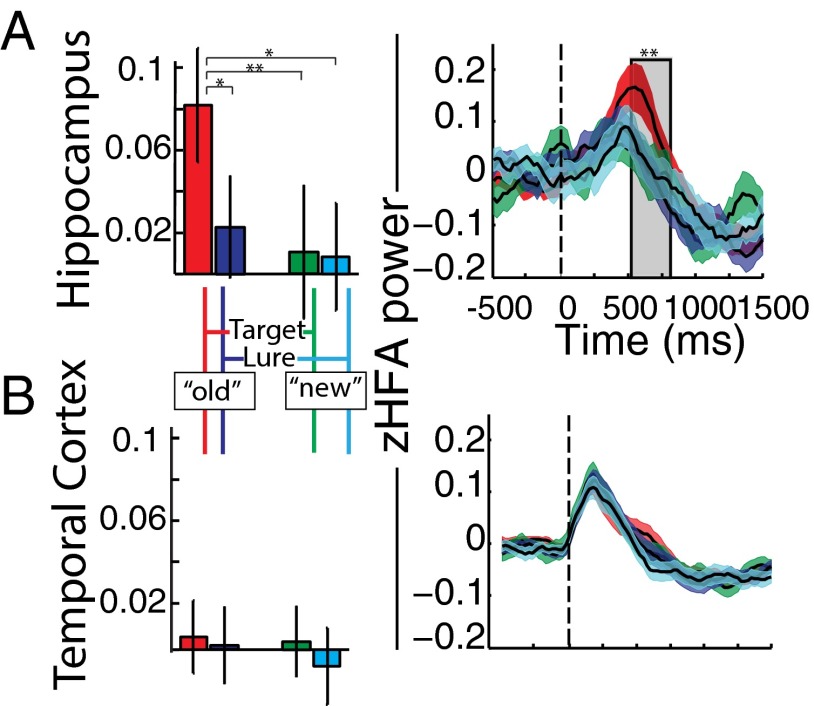Fig. 1.
(A) zHFA in the hippocampus during recognition. The left panel displays mean and ±1 SEM of subjects’ zHFA during recognition based on target–lure status and response choice (old, new) factors during the 200–1,000 ms following presentation of a test item. zHFA did not significantly vary as function or target–lure status nor response choice; however, there was a significant interaction between these two factors. zHFA associated with hit (true-positive) trials was greater than the other three types of trials. The panel displays zHFA values for each target–lure and response choice combination (color schema same as in A) over time (200 ms, 25-ms sliding window) between 500 ms prior and 1,500 ms after test probe onset (vertical hatched line). A cluster analysis revealed that zHFA during hits was significantly different from the other three trial types between 575 and 850 ms after test probe onset. Single and double asterisks denote significance, and , respectively; see Results for full statistical reporting. (B) zHFA in the lateral temporal cortex during recognition. Analyses as above were carried out in the lateral temporal cortex. In this region, zHFA values did not significantly vary as a function of target–lure status or response choice, nor as an interaction between these two factors. Furthermore, there was no significant cluster wherein the four conditions varied over time ().

